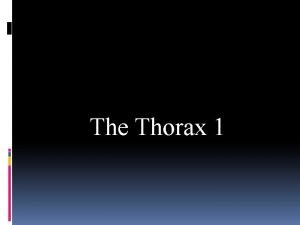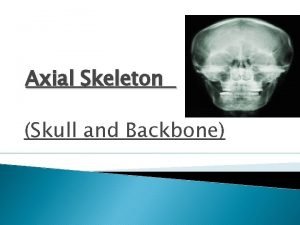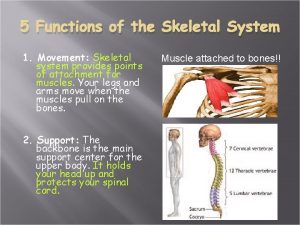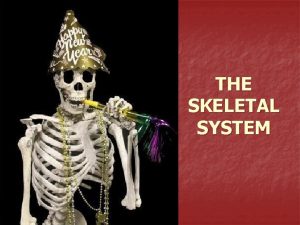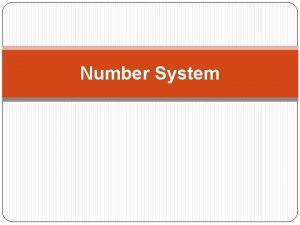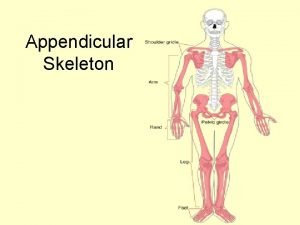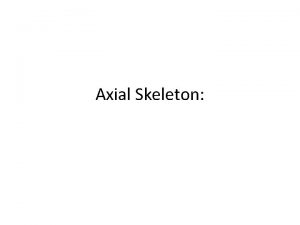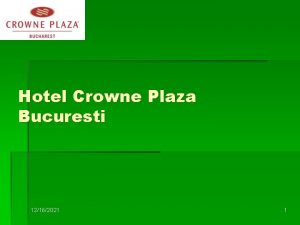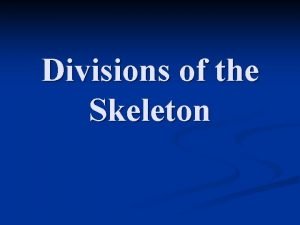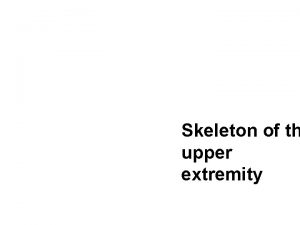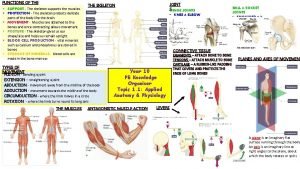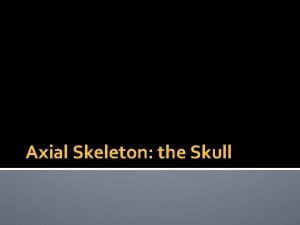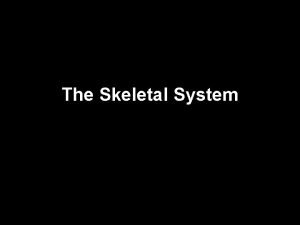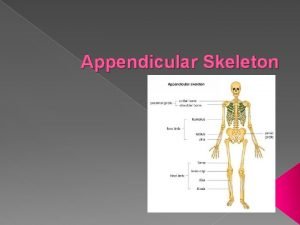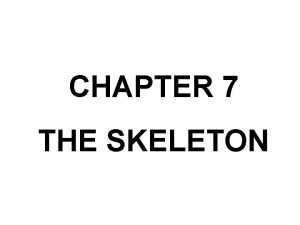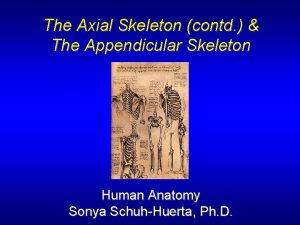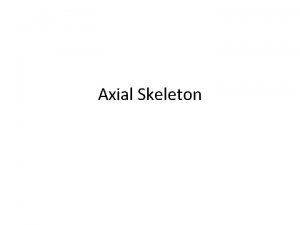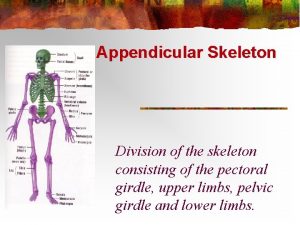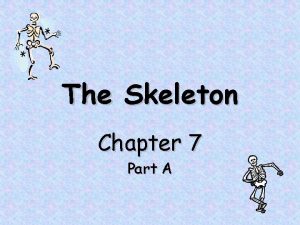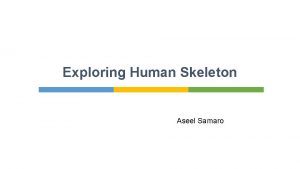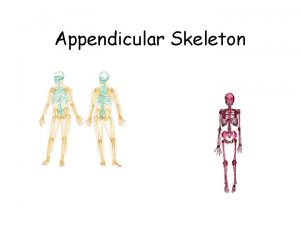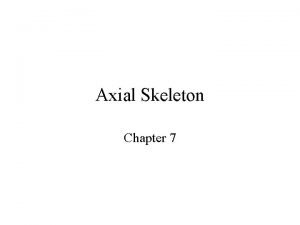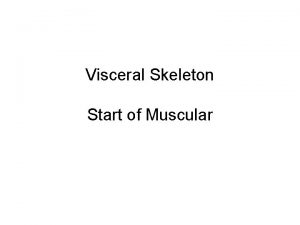The Skeleton 12162021 1 12162021 2 The main



































- Slides: 35

The Skeleton 12/16/2021 1

12/16/2021 2

The main functions of the skeleton are: Movement n Protection n Support n 12/16/2021 3

Movement 12/16/2021 4

Protection The skull protects the brain. n The rib-cage protects the heart and lungs. n 12/16/2021 5

Support n 12/16/2021 The bones in the human skeleton give our bodies a human form. 6

12/16/2021 7

12/16/2021 8

12/16/2021 9

Joints The places where bones MEET together are called joints. The function of joints is to allow movement

Types of joints: 1. Fused joints • In fused joints there is no movement between the bones that meet • Example: The adult skull

2. Hinge joints can only move in one direction Example: the elbow

Ball and Socket joints Ball and socket joints can move in all directions Examples: The shoulders

What type of joints are found in the leg?


Inside moving joints The ends of the bones are covered with cartilage and there is a liquid called synovial fluid. • BOTH of these things protect the bones against damage caused by friction (rubbing against each other) synovial fluid cartilage

Ligaments are elastic fibres That connect bone to bone Tendons are non elastic fibres that connect muscle to bone

Muscles and joints • When a muscle contracts it gets shorter • It pulls the bone by the tendon and the bone will move. Muscle Tendon

Bones and muscles of the arm humerus biceps ulna radius

How would YOU raise the arm? humerus biceps ulna radius

Were you right? triceps relaxes bone pulled upward

How would you lower the arm? biceps humerus radius ulna triceps

Were you right? biceps relaxes bone pulled downward

Watch the muscles….

Watch the muscles….

Watch the muscles….

Watch the muscles….

Watch the muscles….

Watch the muscles….

Watch the muscles….

Can you locate the HINGE? ?

Can you locate the HINGE? ?

You are correct if you located it here

You are correct if you located it here the hinge is where the bones are allowed to move about each other, raising and lowering the arm

Muscles and joints Antagonistic pairs are pairs of muscles that work together to move bones– when one muscle contracts the other relaxes Do you know an example?
 Jugular notch
Jugular notch Axial skeleton vs appendicular
Axial skeleton vs appendicular Axial vs appendicular
Axial vs appendicular What are the 5 functions of the skeletal system
What are the 5 functions of the skeletal system What are the five functions of the skeletal system
What are the five functions of the skeletal system What is the implied main idea of the passage
What is the implied main idea of the passage Void main int main
Void main int main The will future
The will future Diễn thế sinh thái là
Diễn thế sinh thái là Vẽ hình chiếu vuông góc của vật thể sau
Vẽ hình chiếu vuông góc của vật thể sau Lp html
Lp html V cc
V cc Làm thế nào để 102-1=99
Làm thế nào để 102-1=99 Lời thề hippocrates
Lời thề hippocrates Hươu thường đẻ mỗi lứa mấy con
Hươu thường đẻ mỗi lứa mấy con đại từ thay thế
đại từ thay thế Tư thế worms-breton
Tư thế worms-breton Quá trình desamine hóa có thể tạo ra
Quá trình desamine hóa có thể tạo ra Công của trọng lực
Công của trọng lực Thế nào là mạng điện lắp đặt kiểu nổi
Thế nào là mạng điện lắp đặt kiểu nổi Dot
Dot Thế nào là sự mỏi cơ
Thế nào là sự mỏi cơ Bổ thể
Bổ thể Vẽ hình chiếu đứng bằng cạnh của vật thể
Vẽ hình chiếu đứng bằng cạnh của vật thể Phản ứng thế ankan
Phản ứng thế ankan Các môn thể thao bắt đầu bằng từ đua
Các môn thể thao bắt đầu bằng từ đua Thiếu nhi thế giới liên hoan
Thiếu nhi thế giới liên hoan Sự nuôi và dạy con của hổ
Sự nuôi và dạy con của hổ Hát lên người ơi
Hát lên người ơi điện thế nghỉ
điện thế nghỉ Một số thể thơ truyền thống
Một số thể thơ truyền thống Trời xanh đây là của chúng ta thể thơ
Trời xanh đây là của chúng ta thể thơ Số nguyên tố là
Số nguyên tố là Tỉ lệ cơ thể trẻ em
Tỉ lệ cơ thể trẻ em Fecboak
Fecboak Các châu lục và đại dương trên thế giới
Các châu lục và đại dương trên thế giới
